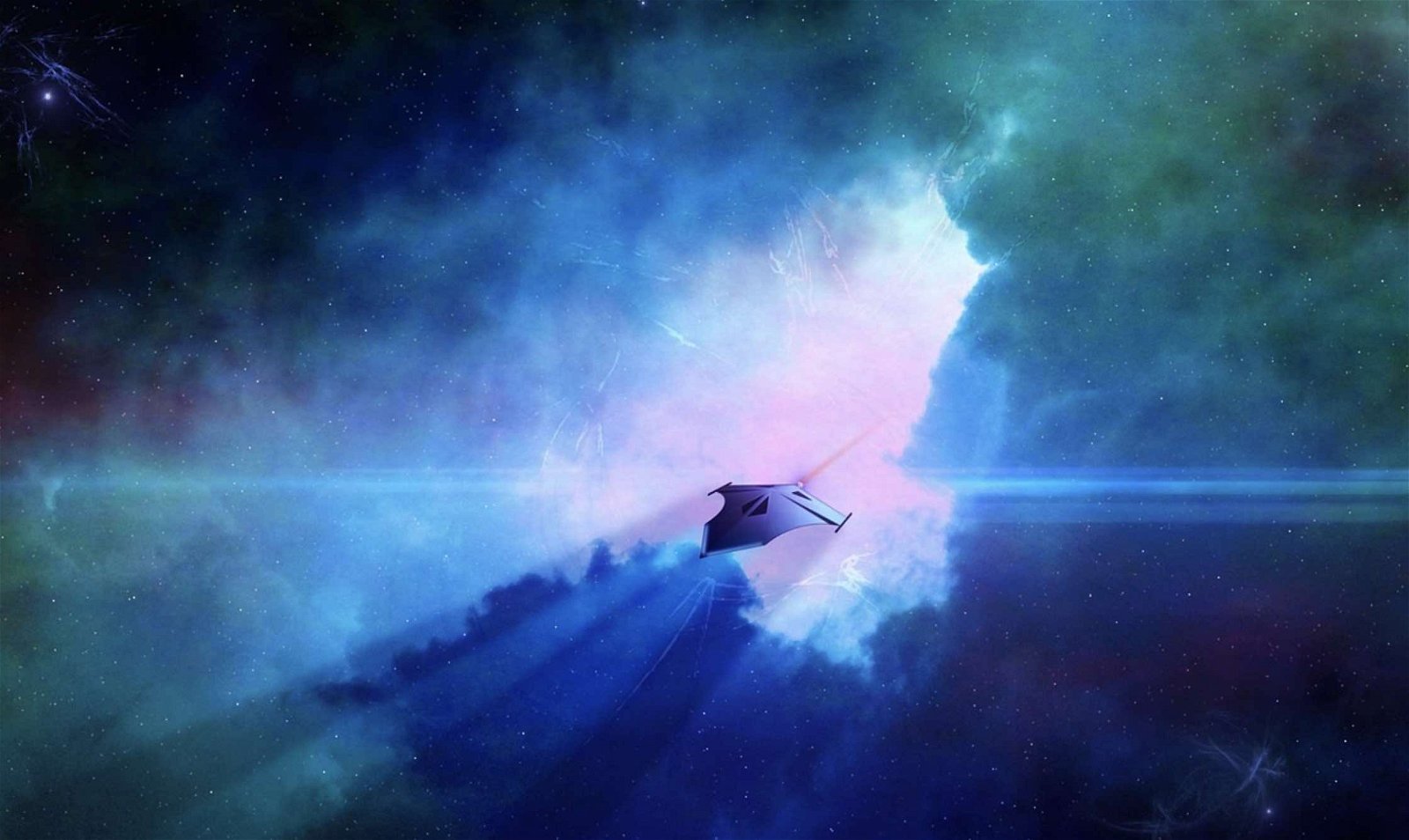In a 1957 paper, the cosmologist Hermann Bondi considered the possibility that an object with a negative mass would create a repulsive force of gravity. When placed next to a positive mass, it would repel it, but the positive mass would attract the negative mass. If the two masses are equal but of opposite signs, the pair will accelerate in the same direction indefinitely. The total kinetic energy would be zero, consistent with the conservation of energy.
If the positive mass is an Earth-like planet, this engine can accelerate at 1 g, the comfortable acceleration we feel on the surface of Earth. Including passengers made from the material of this planet, like humans, comes at no cost. Accelerating at 1 g for a full year would bring the planet to the speed of light. Steady acceleration for several decades would allow the planet to traverse the entire Universe during the lifetime of the passengers, thanks to the time dilation experienced very close to the speed of light.
The only missing component of the engine that would allow us to engage in this journey is the negative mass. Robert Forward wrote a paper about the opportunity offered by this propulsion concept in 1990. I am currently co-authoring a paper that shows how to engineer a negative mass object from a scalar field, consistent with Albert Einstein’s General Theory of Relativity.
Are there other methods to reach the speed of light? A less hypothetical approach is using a light sail, namely a thin membrane pushed by reflecting light. In the Starshot concept for which I chair the scientific advisory board, a gram-mass payload on a human-size sail is pushed by a 100-giga-Watt laser over a few minutes to a fraction of the speed of light across a distance that is five times farther than the Moon. NASA is currently developing solar sails as a futuristic propulsion method for space exploration.
If another civilization engaged in laser-sail propulsion of massive payloads between habitable planets like the Earth and Mars, we could see the flash of light when the two planets are oriented along our line of sight. In a 2015 paper with my former postdoc, James Guillochon, we calculated the features of the resulting flash of light as an interesting techno-signature.
Is it possible that Starshot-like light sails are passing near Earth without us noticing them? Astronomers train their telescopes on solar system asteroids or comets that move ten thousand times slower than light. If a Starshot probe passed by, survey telescopes like Pan-STARRS, the Zwicky Transient Facility or the upcoming Vera C. Rubin Observatory would, at best, see it once, and the astronomers would ignore the scarce data. Moreover, a person-size object can only be detected if it collides with Earth and produces a fireball from its friction with the atmosphere. In a recent paper with my student Amir Siraj, we showed that a global network of several hundred all-sky optical cameras with a time resolution of a tenth of a millisecond would be capable of detecting Starshot meteors moving close to the speed of light.
A technological probe crashing into a planet could potentially survive the atmospheric entry if it is equipped with a parachute or is surrounded by a shielding enclosure. The first interstellar meteors, IM1 and IM2, were detected through their fireballs. If we find any piece of equipment on the ocean floor in the forthcoming expedition to retrieve the relics of IM1, we would know that it was manufactured by an extraterrestrial technological civilization.
Based on the newly determined fireball elevation, IM1’s material strength was ten times tougher than all 272 meteors in the CNEOS catalog. Extrapolating IM1’s velocity back in time implies that it was moving at 60 kilometers per second in interstellar space, faster than 95% of all stars in the vicinity of the Sun. A conventional chemical rocket engine could explain this excess speed. IM1’s engine could represent the current technologies we use for interstellar probes like Voyager 1 and 2, Pioneer 10 and 11, and New Horizons.
Here’s hoping that by studying interstellar objects, we will learn about exotic propulsion methods that will make it easier for us to venture into interstellar space. As noted in my forthcoming book titled “Interstellar,” I am seeking to learn from a higher intelligence in outer space what we could aspire to be.
Avi Loeb is the head of the Galileo Project, founding director of Harvard University’s – Black Hole Initiative, director of the Institute for Theory and Computation at the Harvard-Smithsonian Center for Astrophysics, and the former chair of the astronomy department at Harvard University (2011-2020). He chairs the advisory board for the Breakthrough Starshot project, and is a former member of the President’s Council of Advisors onScience and Technology and a former chair of the Board on Physics and Astronomy of the National Academies. He is the bestselling author of “Extraterrestrial: The First Sign of Intelligent Life Beyond Earth” and a co-author of the textbook “Life in the Cosmos”, both published in 2021. His new book, titled “Interstellar”, is scheduled for publication in August 2023.

